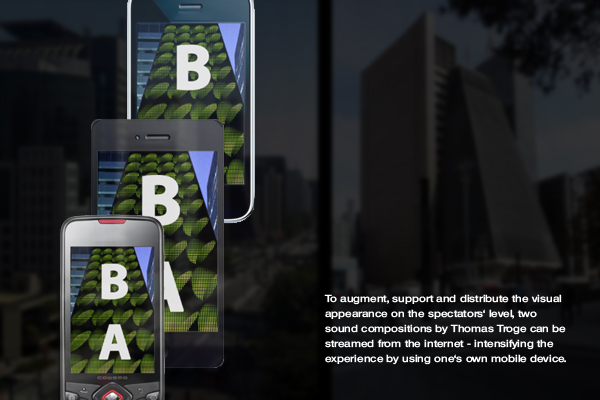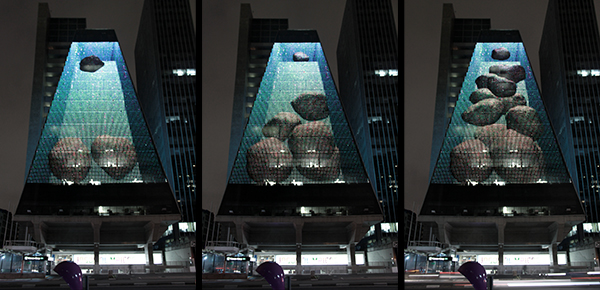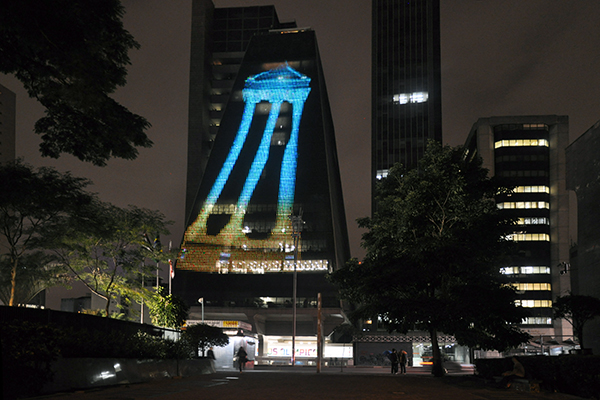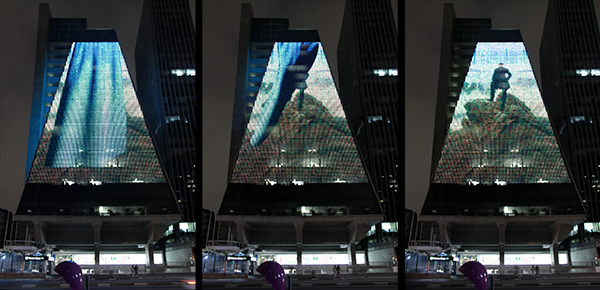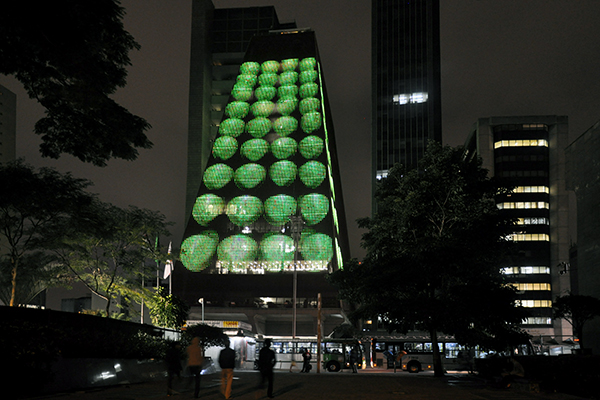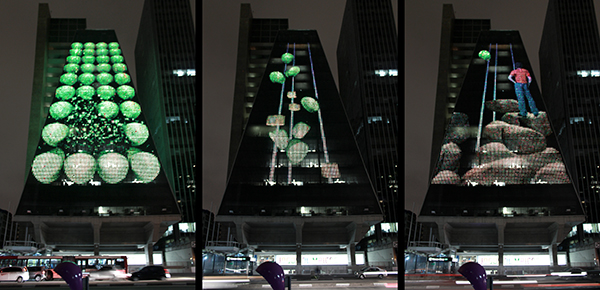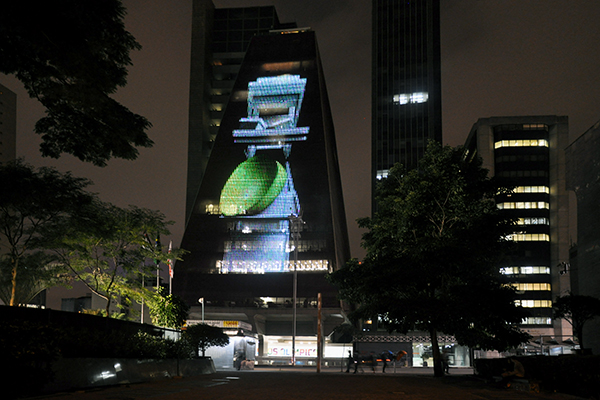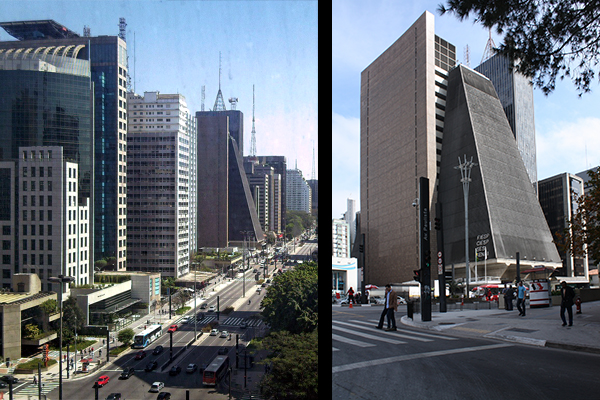
The conceptual background behind the video is to enable an interplay between plain surface and simulated space. It moves between the two poles of filmic image and a time bound aspect of the existing architecture. On the one hand extracted elements from the urban space respectively architectural fragments and on the other contrasting shapes of a seemingly strange nature, form the content. Both spheres mix each other on a level that is affected by artificiality and art historical references.
he façade serves as a stage for an urban situation that gives the impression to be bizarre and which constantly rubs against the multitude of the mega city São Paulo with different spacial and filmic aspects.
The guiding principle of the video can be paraphrased with the term “friction”. Moirées are created out of fine structures that are stacked and moved against each other, thus creating a tension field and a special kind of energy. Large-sized line/grid combinations are interfered and set against those Moirées. They twist and move in opposite directions to each other and to the different parts of the building – as they lean on the light and shadow play of the architecture.
For instance the typical phone boxes, used in São Paulo, are placed right onto the building through a computer simulation. Within the course of the video‘s choreography serial alignment let the boxes form an ornament on the surface of the façade and finally become part of an indicated computer game. Thus the element „phone box“ runs through diverse spacial contexts or changes within filmic sceneries. Simulated rooms extend the building itself, e.g. using it like a silo and visualizing a container for rolling off stone chippings. Those stones are transformed and glued to a kind of wallpaper covering the surface of the building and finally transforming again into a part of the iconic Caspar David Friedrich painting „Wanderer above the Sea of Fog“.
